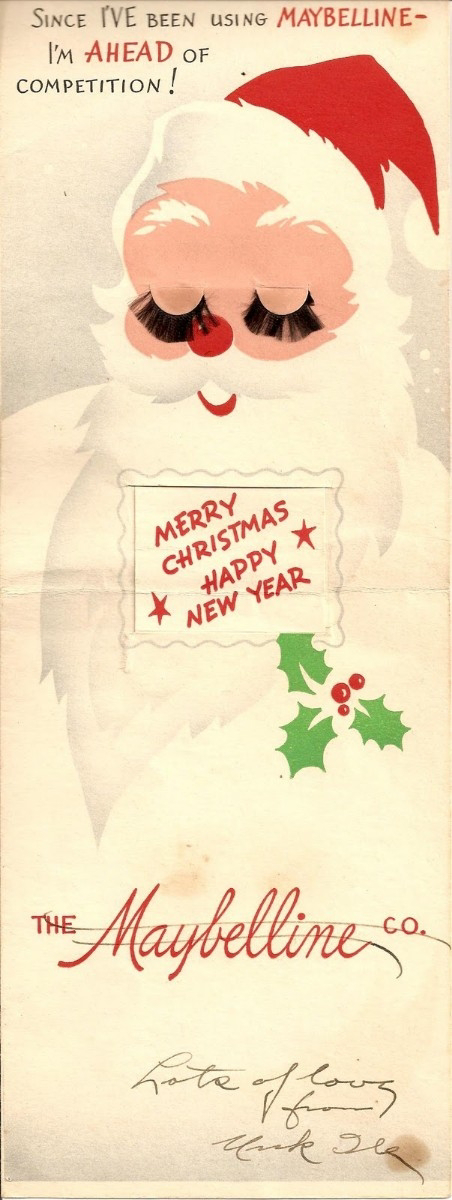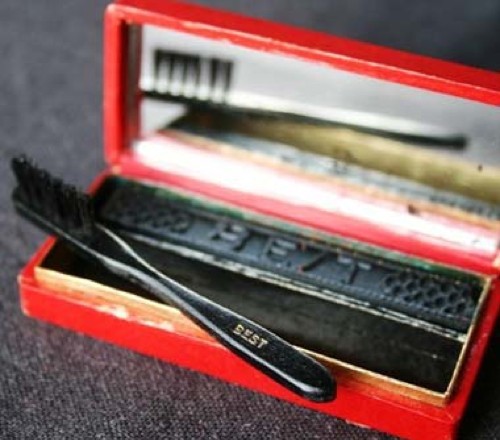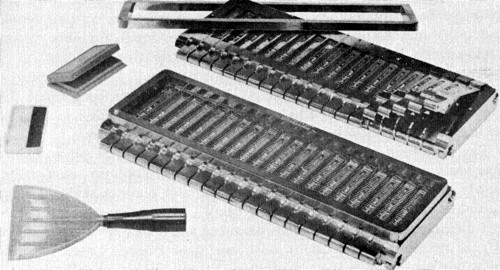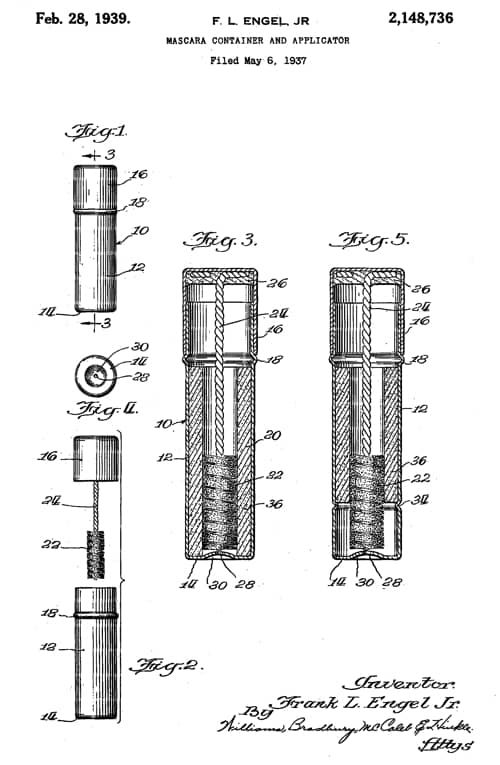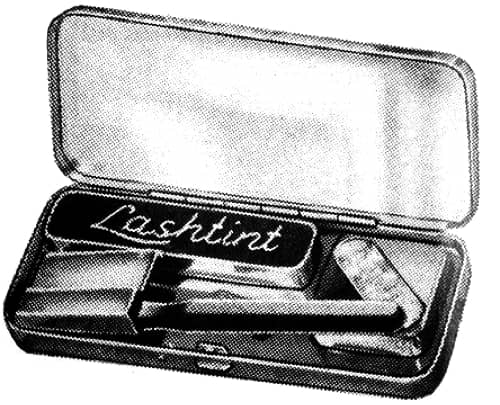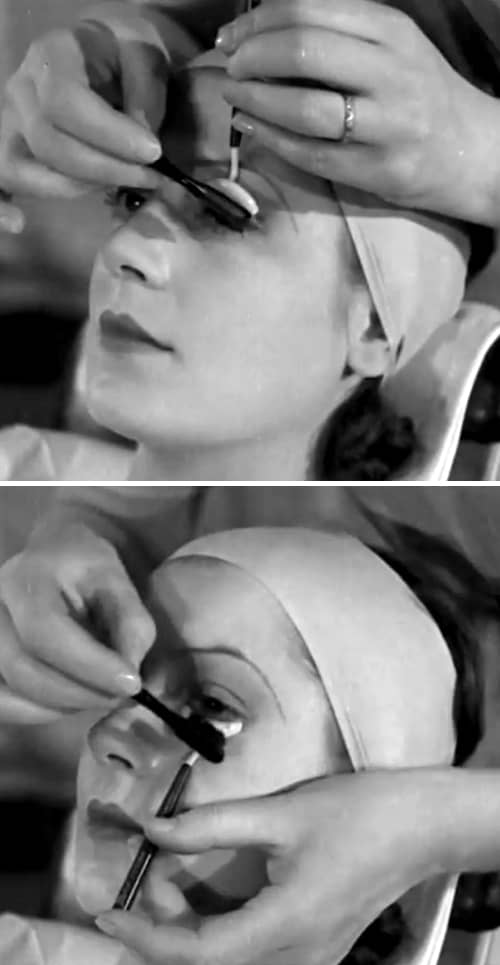Maybelline Queen! Evelyn Williams - Oh What Price Glory!
My grandmother Evelyn with my father William Preston Williams at Dundee Military School, Chicago, 1934 -1935
With the same voratious appetite Evelyn had for succeeding in all areas of her life, including playing the violin, mastering the stage as a ballerina and finally securing a position within the Maybelline family, she focused on her only child William Preston Williams Jr. (Bill.)
Evelyn wasn't your ordinary sweet homemaker, though she did love her son as ferociously as a mother Lion loves her cub, however her main objective was to instill a mindset for survival in the boy and that meant creating an indisputable bond between Bill and his uncle Tom Lyle Williams.
She succeeded, though not without making herself unpopular with the rest of the Williams family. Evelyn fought on the battlefield of life in her persuit to win at all costs and today I realize my remarkable grandmother, the original auntie Mame, was two generations ahead of her time.
A tiny 5' 2" powerhouse with boundless energy, Machavellian mental machinations and the ability to outsmart the smartest of wild cats, she had one desire. To place her clan at the top of the heap no matter what the price -and Evelyn paid the highest price of all... with her life!
Read more about Evelyn Williams incredible story and her ability to get what she wanted - while growing even more beautiful and glamorus as she aged in
The Maybelline Story and the Spirited Family Dynasty Behind It.
Nana was a diva in every respect and not only expected but demanded I follow in her footsteps. I wonder if she'd be pleased today with the fact I've dedicated my life to her memory and the family she loved so much.
With the same voratious appetite Evelyn had for succeeding in all areas of her life, including playing the violin, mastering the stage as a ballerina and finally securing a position within the Maybelline family, she focused on her only child William Preston Williams Jr. (Bill.)
Evelyn wasn't your ordinary sweet homemaker, though she did love her son as ferociously as a mother Lion loves her cub, however her main objective was to instill a mindset for survival in the boy and that meant creating an indisputable bond between Bill and his uncle Tom Lyle Williams.
She succeeded, though not without making herself unpopular with the rest of the Williams family. Evelyn fought on the battlefield of life in her persuit to win at all costs and today I realize my remarkable grandmother, the original auntie Mame, was two generations ahead of her time.
A tiny 5' 2" powerhouse with boundless energy, Machavellian mental machinations and the ability to outsmart the smartest of wild cats, she had one desire. To place her clan at the top of the heap no matter what the price -and Evelyn paid the highest price of all... with her life!
Read more about Evelyn Williams incredible story and her ability to get what she wanted - while growing even more beautiful and glamorus as she aged in
The Maybelline Story and the Spirited Family Dynasty Behind It.
Nana was a diva in every respect and not only expected but demanded I follow in her footsteps. I wonder if she'd be pleased today with the fact I've dedicated my life to her memory and the family she loved so much.
What kept Maybelline Heiress, looking youthful until her death at 77
Total Relaxation with Moist Heat Therapy

I too have been using them for over 30 years and here is why... Hydroculators are packed with soothing relief. Chiropractors use them relax a patient's tight back after an injury and for management of pain do to: Arthritis, Bursitis, Sprains, Strains, Backaches and stress.
Nana had been in a couple of accidents and loved how the hydroculators relaxed not only her back but the stress on her face. It works by releasing steam from the pack penetrating so deep it gets blood back into pinched nerves and relaxes them completely.
I have to admit that after lying on my hydroculators or hot steam packs I sleep like a baby and my face shows no stress. Try it and see how this secret will work for you. Read more about Nana in my book "The Maybelline Story."
Nana, Evelyn Williams at 77
Vintage Beauty trick taken to a New level. Sensory Deprivation the ultimate in relaxation
Evelyn relaxing at her new home in West Los Angles, California, 1938.
Relaxation is a Beauty Secrets.
After Evelyn and Bill followed Tom Lyle to California he bought them a little bungalow in West Los Angeles, a few miles from the Villa Valentino in the Hollywood Hills where he and Emery lived. Tom Lyle gave Evelyn a nice allowance and told her to rest and enjoy the California sunshine. She took his advice about relaxing but never ever allowed the sun to touch her perfect alabaster skin for more than 10 minutes, just enough to soak in a little vitamin D.
Relaxation is a Beauty Secrets.
After Evelyn and Bill followed Tom Lyle to California he bought them a little bungalow in West Los Angeles, a few miles from the Villa Valentino in the Hollywood Hills where he and Emery lived. Tom Lyle gave Evelyn a nice allowance and told her to rest and enjoy the California sunshine. She took his advice about relaxing but never ever allowed the sun to touch her perfect alabaster skin for more than 10 minutes, just enough to soak in a little vitamin D.
Speaking of soaking, I remember one of Nana's most famous beauty secrets, was soaking in a hot tub with three cups of Epsom salt and sometimes even a cup of baking soda to soften her skin. She told me there was nothing in the world better for relaxing tense muscles after a game of badminton than a half hour in the tub with Epsom Salt. She believed that a good soak erased a multitude of sins and kept her looking young all her life.
When I became a teenager I soaked in an Epsom Salt bath before getting dressed for a Saturday night date. I believed it slimmed me down so I could fit in my "skinny pants" in 1964, and it was so relaxing that I felt like a million bucks and looked fabulous. Try it yourself and see if it doesn't make you feel relaxed and look beautiful too.
Today I've taken relaxing in an Epson Salt bath to a new level. Sensory-deprivation-tank, or floating, is the ultimate in relaxation and meditation. My grandmother would probably have one in her home if she were alive today. Read about on this link and try it for yourself . It's worth it.
Labels: beauty tricks, Evelyn Williams, Miss Maybelline, vintage beauty in
What can readers take away from The Maybelline Story and the Spirited Family Dynasty Behind It.
It's been a long process. My grandmother began telling me the Maybelline story when I was a young girl and the seed was planted.
After her death I was determined to finish it. I knew that if I didn’t tell the story it would be lost forever. The Maybelline Story is a thread in the fabric of American history and a big part of vintage Hollywood glamour. I also wanted my great uncle, Tom Lyle Williams, the founder of the Maybelline Company to be remembered for his tremendous contribution to the Cosmetic industry as well.
 |
| Nana, Evelyn Williams |
Growing up with a great uncle who made my life so magical. It wasn't about the money; It was about being so close with my cousins and the fun of sharing our excitement as the Maybelline grew into a global giant. Now as an older woman I hope to give back some of the wisdom and strength I gained ridding this roller coaster experience.
My grandmother, Evelyn Williams was married to Tom Lyle's brother Preston, my grandfather. After Preston's death, at only 37 years of age, she and my 12-year-old father followed Tom Lyle from Chicago to California. The three of them remained extremely close and loved to talk about the good old days when Maybelline was a little mail order business sold through the classifieds in Movie magazines. I was so fascinated by their stories as a little girl that all I wanted to do was hear more, as often as possible. Soon I became my grandmother’s little protege and eventually her little clone. So yes I was indoctrinated at an early age with the rules of the game, the family dynamics and I did know and appreciate the tremendous contribution Tom Lyle bestowed on women and the world of beauty.
 |
What advice can you give others who want to follow in your uncle’s shoes? For the underdogs.
Tom Lyle Williams was the biggest underdog of all, of course. That's what the Maybelline Story is all about. He started out with nothing more than a good idea, lots of determination and a $500 loan from his brother and turned it into a worldwide brand. It's all about building your brand and your reputation. Brands come and go if it's not built on integrity. Like doing a blog...It takes about three years before you really see results and during that time, you develop discipline and determination, or you give up and never see the results of your labor. As my great uncle would say... It's easy to be excited and happy when it's new and easy... the true test of success, is keeping the momentum going during the down cycles. If you believe in your project, you have to keep going even though it might take years. It took me 20 years to get published and I wanted to give up and burn my manuscript all the time. When I least expected it, the miracle happened and now the energy I put forth building that momentum is expanding the blog and my voice into the world - Because I never gave up.
What is this book about? Is there anything in this book that you did not publish? Care to share?
The Maybelline story is about a young 19-year-old entrepreneur who rides the ups and downs of life while building a little company called Maybelline. The book is a rags to riches story with an interesting twist in the end you won't forget.
Who are your greatest influences and why?
My father Bill Williams was Tom Lyle's nephew and godson. He grew up at the Villa Valentino in Hollywood where he learned the secrets to his uncle’s great success. My father was an extremely talented interior designer and builder. When my home burned down in the 1993 Laguna Beach, California Firestorm I lost everything because I wasn't home. I wanted to give up and die, but it was my father who held me together and helped me get back on my feet. I thrived because of his determination to see me overcome my doubts and succeed. He designed and helped me rebuild my home. He also helped me research and write my book. I learned so much from him and now carry that spirit of “Yes I can!” with me to pass onto the next generation.
What will readers take from this great read?
They will be inspired to believe anything is possible if they keep going and never give up.
What was the best advice your uncle or mother gave you about beauty?
My mother believed that beauty was an inside job. That who you are inside is reflected on your face. You see beautiful young girls turn into nasty middle-aged women and bitter old ladies. All the Maybelline in the world can't cover up the truth of who you are inside. If a woman doesn't grow, change and accept life she will remain a spoiled unattractive child in an aging body. All women must work on their attitude and mature within to keep their youthful effervescent beauty into old age. Like the saying goes, Maybe She's born with it... Maybe it's Maybelline.
Describe your best achievement with your family name and without?
My best achievement with the Maybelline name so far, is writing my book and becoming a positive role model for women who want to achieve their goals. It's not about make-up for me anymore; it's way beyond make-up. Without the Maybelline name, my biggest achievement is being Mom and Nana and a positive role model for my family I grow into old age.
 | |
|
Going up to my great uncle's home in Bel Air California with my family and playing with him in the pool. I remember he was such an unassuming man that he'd actually wear swim trunks pinned at the waist because the elastic had stretched out. Here was a man who could afford the best and yet was so comfortable with himself around his family; he didn't need to show off. On the other hand he was so generous that he gave millions to them after the sale of the Maybelline Company in December of 1967

















